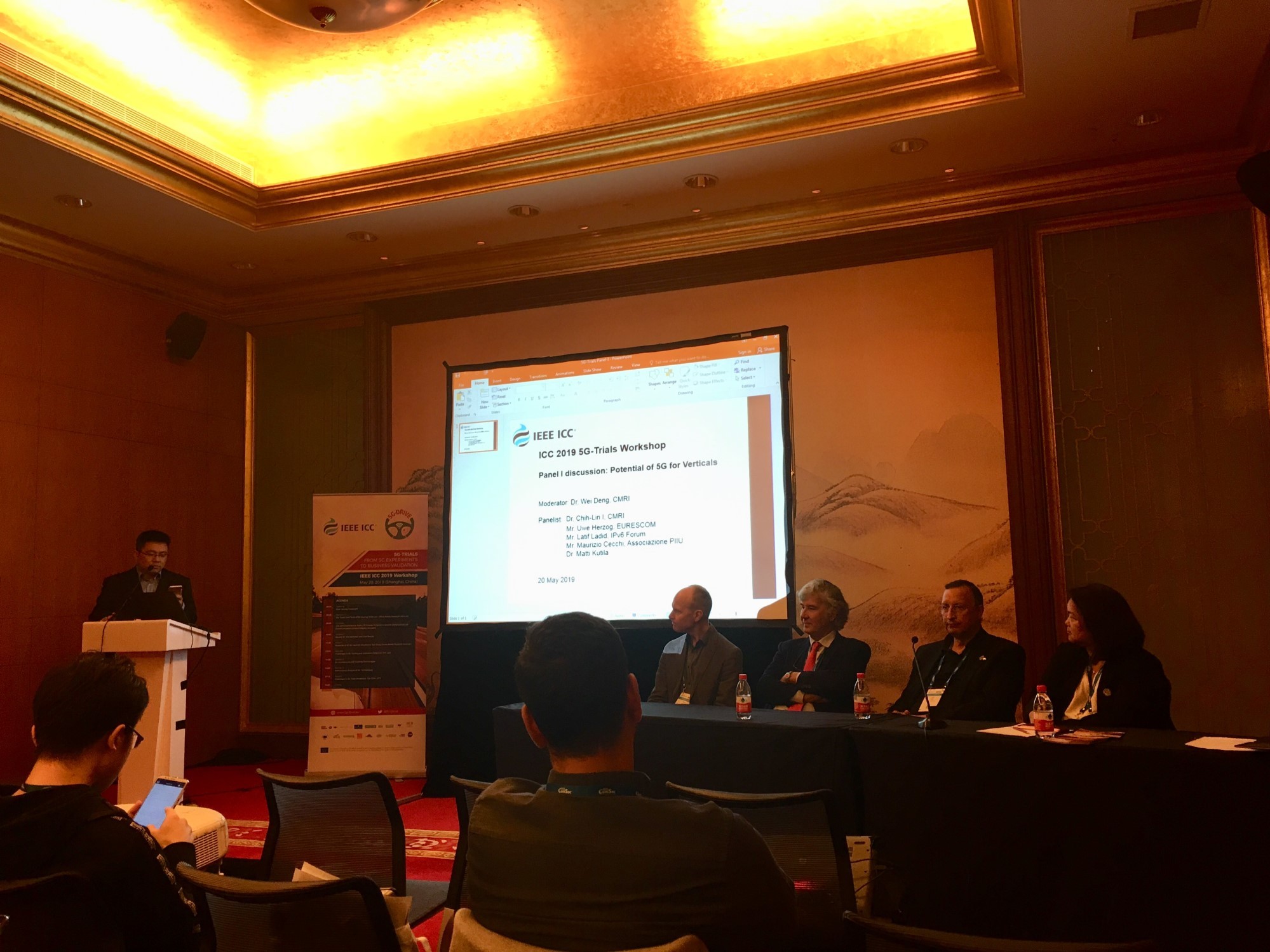5G-DRIVE organises its first project workshop. Key conclusions from the 5G-DRIVE workshop: 5G-Trials – From 5G Experiments to Business Validation
A large number of 5G trials are currently being organised and implemented around the globe. In the current phase of 5G evolution, where the design phase has been successfully completed and the first set of standards has been released, the focus is now on trialling. The objective of the workshop was to identify and collect feedback from some of the ongoing 5G trialling activities, and to discuss potential market opportunities for 5G. The organisers of the workshop, 5G PPP project 5G-DRIVE (https://5g-drive.eu/(opens in new window)) and China Mobile Research Centre, are currently running a joint project on 5G trialling between the EU and China. As project partners are well connected in the 5G community, they were successful in distributing the call for papers for this workshop. With 30 paper submissions received, this workshop was ranked second among the 29 IEEE ICC workshops. In line with IEEE rules that require a 50% rejection rate, 15 papers were selected. The paper presentations together with three invited keynote speeches and two panel discussions filled a long and interesting day for the workshop’s 40 attendees. In the welcome talk, the presenter gave an overview of 5G trialling activities in Europe and showed some statistics e.g. in terms of trials per country, spectrum usage, the participation by vertical sectors in 5G trialling activities and the size of larger trials and first 5G roll-outs around the globe. In the first keynote speech, Chih-Lin I from China Mobile Research Institute gave her view on “The Twists and Turns of the 5G Journey,” which gave a glimpse on the 5G activities of China Mobile and a comprehensive overview of various aspects of 5G down to more recent topics, such as O-RAN, which aims at open interoperable interfaces and RAN virtualisation. In the second keynote, Matti Kutila from VTT shared his insights on activities “Towards Connected and Highly Automated Driving,” which are being addressed in 5G-DRIVE and national projects in Finland. In the first session, five papers on “Recent 5G Trial Activities and Trial Results” were presented. This included a paper about ‘5G Trial Cooperation between EU and China’, an overview of the 5G EVE end-to-end 5G facility for extensive trials, presented by Maurizio Cecchi, and presentations on recent trials of G.metro-based passive WDM fronthaul and database supported flexible spectrum access. The second session addressed aspects related to the 5G architecture and enabling technologies. Results from a number of interesting areas were presented, including the deployment of a 5G architecture for crowd events, an indoor positioning platform to support 5G location-based services, and the application and experiments of 5G technology-powered industrial Internet. Lastly, the third paper session addressed aspects related to the performance analysis of 5G technologies. Two interesting panel discussions were organised: one on the potential of 5G for verticals, and the other on challenges in 5G trials. In the panel ‘Potential of 5G for Verticals’, which was moderated by Wei Deng from China Mobile Research Institute, an interesting debate took place about what revenue operators can assume to actually generate from providing 5G services for vertical sector companies. There was agreement among the panellists that there seems to be large potential for operators in this area. At the same time, the increasing interest from vertical sectors to get individual frequency spectrum allocated, which would allow verticals to build their own 5G network, seems to contradict this. It indicates a certain doubt, at least among some of the verticals, whether they are happy to let operators provide the network for them. Picture: Panellists of the first panel session on the potential of 5G for verticals (from left): Wei Deng, China Mobile Research Institute; Matti Kutila, VTT; Maurizio Cecchi, Associazione PIIU; Latif Ladid, IPv6 Forum, University of Luxembourg; and Chih-Lin I, China Mobile Research Institute



